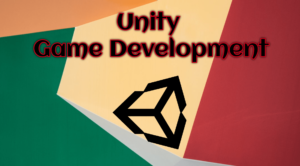Unity Event System and C# is a powerful tool that allows developers to create interactive experiences in their games or applications. With the ability to trigger functions and events based on user interactions, it can add a new level of interactivity to your projects. In this beginner’s guide, we will cover the basics of scripting Unity’s Event System using C#. We will use a question and answer format to help improve your understanding of the concepts, and provide practical examples to help you get started with your own projects.
Contents
Q: What is the Unity Event System?
A: The Unity Event System is a feature in the Unity game engine that allows developers to trigger functions and events based on user interactions. It works by binding events to game objects or components, and then firing those events when specific conditions are met. For example, you can trigger an event when a button is pressed, a collision occurs, or a certain amount of time has passed.
Q: How do I create an event in Unity?
A: To create an event in Unity, you need to first create a game object or component that you want to bind the event to. For example, if you want to trigger an event when a button is pressed, you would create a UI button and attach a button component to it. Next, you would add an event trigger component to the button, and then add a function to the event trigger component. This function will be called when the button is pressed, and can be used to trigger other functions or events.
Q: How do I script an event in C#?
A: To script an event in C#, you need to first create a function that will be called when the event is triggered. You can create this function anywhere in your script, but it is common to put it in the same script as the game object or component that the event is bound to. For example, if you have a button that you want to trigger an event when pressed, you would create a function like this:
public void OnButtonPressed()
{
// Your code here
}
Next, you need to bind this function to the event trigger component on the button. You can do this in the Unity editor by selecting the button, going to the event trigger component, and then adding a new event. Select the event type you want to trigger (such as “Pointer Down”), and then select the object that has the function you just created. Finally, select the function you want to call when the event is triggered (in this case, “OnButtonPressed”).
Q: What are some common events that I can use in Unity?
A: There are many different events that you can use in Unity, depending on the type of interactivity you want to create. Some common events include:
- Pointer Down: Triggered when a pointer (such as a mouse or touch) is pressed down on an object.
- Pointer Up: Triggered when a pointer is released from an object.
- Pointer Enter: Triggered when a pointer enters the bounds of an object.
- Pointer Exit: Triggered when a pointer exits the bounds of an object.
- Click: Triggered when a pointer is clicked on an object.
- Trigger Enter: Triggered when a game object with a collider enters the bounds of a trigger collider.
- Trigger Exit: Triggered when a game object with a collider exits the bounds of a trigger collider.
Q: Can I use C# to create more complex events in Unity?
A: Yes, C# is a powerful language that can be used to create complex events and interactions in Unity. For example, you can create custom events that are triggered when certain conditions are met, such as when a player completes a level or collects a certain number of items. You can also use C# to control the behavior of game objects in response to user interactions, such as moving a character when a button is pressed or playing a sound when a player enters a certain area.
Q: How can I debug my events in Unity?
A: Debugging is an important part of scripting in Unity, and can help you identify and fix issues with your events. To debug an event, you can use Unity’s built-in debugging tools, such as the console window or the debugger. You can also add debug statements to your C# code to print out information about the event and its behavior. For example, you might add a statement like this to your OnButtonPressed() function:
Debug.Log("Button pressed!");
This will print a message to the console when the button is pressed, so you can verify that your event is working correctly.
Conclusion:
In this beginner’s guide, we have covered the basics of scripting Unity’s Event System using C#. We have discussed how to create and bind events in Unity, as well as how to create custom events and debug your code. With these skills, you can start building your own interactive experiences in Unity, and create games and applications that are both fun and engaging. As you become more familiar with Unity and C#, you can explore more advanced techniques and features to take your projects to the next level.
You may like:
Unity Physics and Collisions: A Beginner’s Guide
Unity Event System and C# scripting,Unity Event System and C# scripting,Unity Event System and C# scripting,Unity Event System and C# scripting,Unity Event System and C# scripting, Unity Event System and C# scripting, Unity Event System and C# scripting


Pingback: Basic Audio Management in Unity with Example